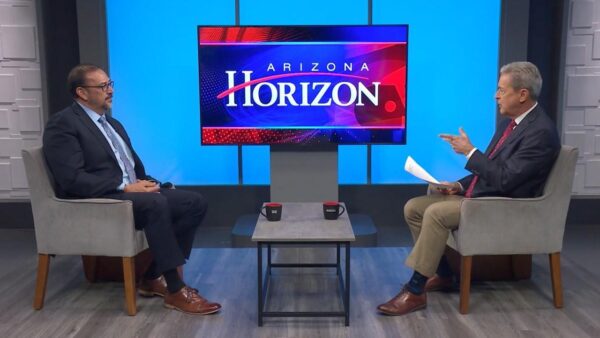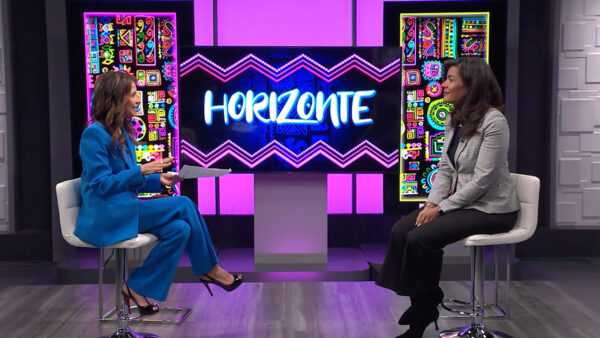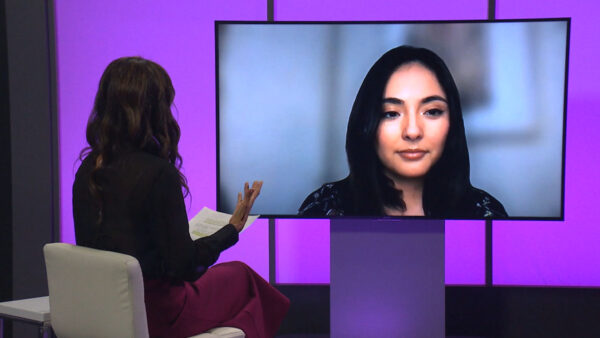The South Phoenix Photovoice Project is a photography exhibit featuring images by a group of fifth and sixth graders that reflect their perspectives of health and well-being in the South Phoenix community.
The project’s co-director, Assistant Professor Dr. Seline Szkupinski Quiroga from the ASU Department of Transborder Chicana/o and Latina/o Studies, talks about the project.
José Cárdenas: There is a unique exhibit on display showcasing the photography of fifth and sixth grade students. The south Phoenix photovoice project was designed for urban youth to show their perspective of health challenges happening in their own community. Joining me now is the co-director of the project and assistant professor at ASU's transborder Chicano/Chicana and Latina/Latino students, Dr. Seline Szkupinski Quiroga. Thank you for joining us on "Horizonte." Tell us how this project came to be and what the initial focus was.
Seline Szkupinski Quiroga: We've been working in south Phoenix and speaking with physicians and parents and clinicians about rising rates of childhood obesity and we didn't have the voice of the youth themselves. So we decided to use photography as a way to get a youth centric view of their health environment. And to allow them to tell us what they saw as the barriers and challenges.
José Cárdenas: And the focus was, as you indicated, on health and started going out and taking pictures at first few -- we've got pictures of food aspects or diet-related things they did. And we're going to show them as we're talking here. The first ones really did focus on food. Here we've got fast food. And what were they trying to say here. And here's some cake and we've got the name of the artists. That these were the sources of health problems for them?
Seline Szkupinski Quiroga: There wasn't that simple of an answer. We did ask what's healthy eating and unhealthy eating. And for example, the cake, partly they took the picture because it was such bright colors but cake was a family celebration and I've identified the family as an important support for them to be healthy. By talking about the photographs you could get all of the different perspectives.
José Cárdenas: And the project quickly expanded in terms of the photographs they were taking, beyond food to reflect the environment in which they found themselves living. We've got pictures for example of graffiti and other aspects -- of graffiti and other aspects. The thumbs down. Another one on I think some trash in the area. What were they doing with these? What was the point?
Seline Szkupinski Quiroga: They started off with things they felt they had control over. But then when we opened up the question, the photo assignment was take pictures of things that make it hard for you to stay healthy. And then they brought in pictures of graffiti and broken beer bottles and trash and trash in parks which said they couldn't play and then they could talk about them, but they didn't know what to do about it and this was a way to bring it other people's attention through photography.
José Cárdenas: And some aspects are a little bit more sobering. With respect to the violent environment in which many of them found themselves. We've got pictures coming up now. And this one, the circle K, a mixed thing here, of food and also liquor, right?
Seline Szkupinski Quiroga: And the type of food they sell. So they took pictures of vending machines and circle K's and these are places in the community that are selling cigarettes and liquor, and where's the healthy food and drinks? And they were just pointing out that these incentives to not do healthy things is all around them.
José Cárdenas: And then as I mentioned before, some very sobering pictures as they related to the violence of the area in which they find themselves. We have a pictures of a casket. And I think -- and we have a picture of a casket. I think you told us, there were a number of deaths in the community. That were part of the experiences they had during the project.
Seline Szkupinski Quiroga: One of the things about the project, we met with these kids weekly for over 12 weeks and at the beginning, none of the things around violence was salient but as they gained trust, they started telling us stories about kids who had been shot or hit by drunk drivers. And we realized that death and the possibility of death is very common to these kids. And they started thinking about it, how does it affect my health? It's not just something I should take for granted.
José Cárdenas: I want to talk about two things, one, what the students who participated got out of this, and then what you think we've learned from this experience. Let's start with the first.
Seline Szkupinski Quiroga: PhotoVoice is the idea of being able to give voice to people who aren't normally heard and all of these debates about childhood obesity, that's the voice that's missing. The kids learned a skill and trained by a photographer but learned how to think critically and articulate their thoughts and some sense of empowerment. That they could point to something they saw wrong in their community and someone would listen.
José Cárdenas: We should mention the funding for the project.
Seline Szkupinski Quiroga: It was a small pilot grant from the association -- the association of state and territorial public health directors and the Centers for Disease Control.
José Cárdenas: And then we've got 30 seconds left. Results that you think are transferable?
Seline Szkupinski Quiroga: We presented a report to the department of public health, and these are additional health concerns and that we should be aware of and developing intervention programs for youth. Shouldn't just tell them to go and walk. But pay attention that they have a place to walk.
José Cárdenas: Thanks for sharing this project and what it means to kids in south Phoenix. Thank you very much.
Seline Szkupinski Quiroga: Thank you.
Dr. Seline Szkupinski Quiroga:Assistant Professor,Department of Transborder Chicana/o and Latina/o Studies, Arizona State University;























